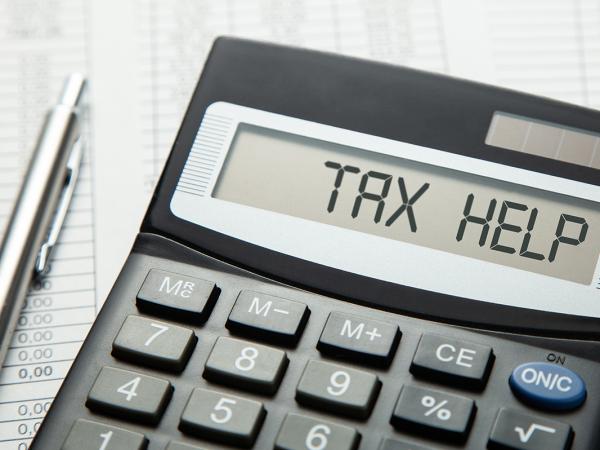Employment law status
The status of your worker for employment law purposes is important. Their status determines the employment law rights that they have. It also determines your obligations to them.

Content on this page:
What employment law status is
Employment status describes the working relationship between someone providing work and someone doing the work. The employment status of the person you take on determines the rights that they have and the responsibilities you have towards them in employment law.
It may not be the same as tax status
Employment law status is different from tax status. It is possible that the person you take on may have a different status for employment law purposes than for tax purposes. It is important that you check carefully the status for each. We explain more about the tax status and how to decide this in respect of your worker in our tax status section.
Different types of employment law status
For tax, there are only two types of status – employed and self-employed. For employment law there are three types of status that are likely to be relevant:
- Employed
- Self-employed
- Worker
Workers and their rights
The term worker has a technical meaning in law as well as referring to the working population more generally. A worker in the technical sense is basically someone who undertakes to do or perform personally any work or services and normally can’t send someone in their place. Their contract is not with their own client or customer, but with someone else’s business.
Their work arrangements tend to be midway between self-employment and employment. They have some characteristics of self-employment (e.g. they use their own tools and can decide their own work schedule) but they depend on the other party for their income (or large part of it).
Workers have some core employment rights such as entitlement to annual leave, the national minimum wage and potentially a workplace pension. They have fewer rights than employees who have extensive rights, but they have more rights than the self-employed who tend to have very few legal protections compared to employed people. Note that Statutory Sick Pay (SSP) is not a ‘worker’ employment law right (as is often suggested) but is attached to whether someone is paid under the PAYE system as there has to be a secondary contributor (someone who is liable to pay class 1 secondary National Insurance contributions) to administer and finance it.
Some individuals such as cycle couriers and Uber taxi drivers working in the gig economy are usually self-employed for tax purposes but have been found to be ‘workers’ for employment law purposes by the Courts (more on this below).
Who decides employment law status
It is your responsibility to determine the status of the person you take on for employment law. Like for tax status, it is matter of fact, not choice.
There is no single test to determine whether a person is an employee, worker or self-employed. All the relevant factors need to be considered. You can find more information on deciding employment law status on GOV.UK.
You may have heard that HMRC’s tax status indicator tool can help you decide someone's employment law status. However, a person's tax law status and employment law status can be different. As such, if the HMRC tax status tool gives your worker an employed status result for tax law then this would only be an indication that your worker is likely to have employee status under employment law. If the HMRC tax status tool gives your worker a self-employed status result for tax law, then this would only be an indication that your worker is likely to have self-employed status under employment law.
In addition, you would also need to consider whether the person you take on has a worker status under employment law. Worker status does not exist for tax law, therefore HMRC’s tool does not cover it.
In the event of a dispute, an employment tribunal can decide someone’s employment law status. Given employment status is quite high profile in the context of new ways of working like in the gig economy, cases can sometimes go all the way through the court system to the Supreme Court. See for example Smith v Pimlico Plumbers, in which a plumber established that he was a worker for the purposes of the Working Time Regulations 1998 and the Employment Rights Act 1996 and not self-employed.
Once status is established, if necessary, the employment tribunal can also enforce the rights that go along with the status. Again the Smith v Pimlico Plumbers case is a good example of this, where a subsequent claim for unpaid holiday was made following the status determination.
You can find information on being taken to an employment tribunal on GOV.UK. There are strict time limits for workers to make a claim to an employment tribunal, usually within three months (less one day) of the underpayment. If there are a series of underpayments, then provided that the claim is made within three months (less one day) of the last deduction, then it may be possible for someone to claim for the earlier deductions. There may, however, be a limit on how far back claims can go.
In certain circumstances, a remedy may be available to someone even where a claim was not brought within the strict time limits.
An important legal case on employment status
An important legal case (Autoclenz Ltd v Belcher [2011]) confirmed certain workers who had been classified as self-employed were in fact employees with a contract of employment.
The company involved was a large one offering car valeting and related services. The individuals concerned in the case all had written contracts, the terms of which were quite explicit in saying that they were being engaged as self-employed contractors rather than as employees. The worker was termed a ‘sub-contractor’. Under the terms of that agreement, the worker confirmed that he was ‘a self-employed independent contractor’.
In general, when interpreting a contract, the law only considers what is in the actual signed contract and not the parties’ intentions. So given the clear written terms of the contract, how did it all go so wrong for the company?
It went wrong, because the employment tribunal was entitled to ignore the terms of the written documentation and to look, instead, at the reality behind the workers’ contracts. This was because, in the view of the courts, the workers had only one choice: to sign up on the terms dictated by the company or seek work elsewhere.
Once this principle – looking at the reality behind the contracts – was applied, all sorts of findings of fact by the employment tribunal justified its conclusion that these individuals were working under a contract of employment.
The following factors had been influential in that conclusion:
- the individuals in question could not be described as being in business on their own account;
- they had no control over the way they did their own work, being subject to the direction and control of other employees, and being obliged to clean the cars in accordance with a detailed specification;
- they could control the hours they worked only in the sense that they could leave when their share was done;
- they had no real economic interest in the way the work was organised, though they could earn more by doing more work;
- they had no say in the contractual terms, which were devised by the company;
- their invoices were prepared by the company, which also decided the amount of deductions to be made for insurance and materials, without any evidence of the correlation between those deductions and the actual costs;
- the company determined the rates of pay, increasing or reducing those rates unilaterally;
- the individual workers were fully integrated into the company’s business and, with only a few exceptions, did no other similar work;
- despite a substitution clause in the written agreement, the individuals were in fact required to do the work themselves; and despite another clause that implied that there was no obligation on the workers to turn up, or on the company to provide work, this was wholly inconsistent with what happened in practice.
It was also noted that the company provided, at the time under consideration, all the equipment and materials, including jet washers, vacuum cleaners, sponges and chemicals.
If the terms of the contract had represented the true nature of the working arrangement, the individuals would be considered to be self-employed. However, the Supreme Court agreed with the earlier Court of Appeal ruling, which had concluded that the employment tribunal was entitled to decide that the individuals were working under contracts of employment.
The above employment law case gives a good summary of what the courts will look at when deciding issues of employment status in the context of applying employment law legislation aimed at protecting workers. It is particularly important to note that the parties cannot necessarily rely on the paperwork or contract in place, if the reality of the situation is different.
The Autoclenz approach was again used in the Uber taxi driver case (Uber BV v Aslam 2021) to help decide that the drivers were workers for employment law purposes.
What to do once status is decided
Once you are clear on what employment law status your worker has, you can start to think about the rights and protections that they have in work and the responsibilities and obligations that you have towards them.
On the page employing staff - in more detail, we briefly look at the employment law rights of employees. You can find out more about the rights and obligations for workers and the self-employed on GOV.UK by following the links below:
Note that employees and workers enjoy many rights under employment law legislation. If you get someone’s employment status wrong (particularly if you treat an employee or worker as self-employed) then this could result in claims for holiday pay, minimum wage and other employee rights like auto-enrolment. This could have serious financial implications and you will probably need to seek professional advice should this situation arise.



